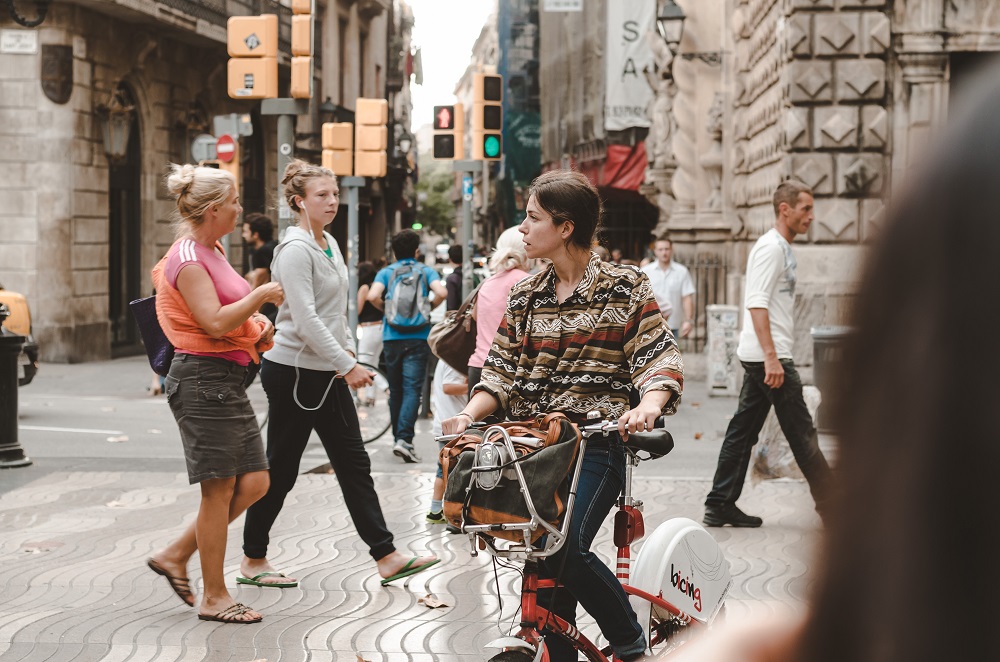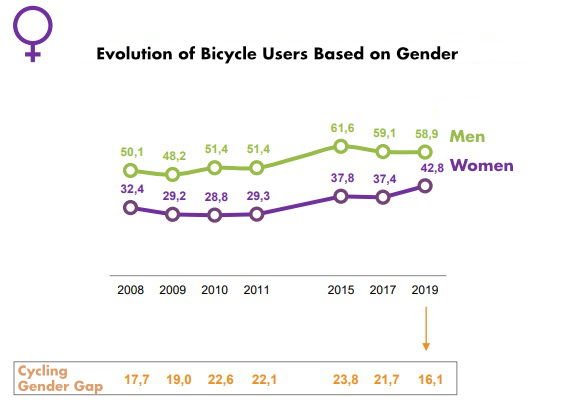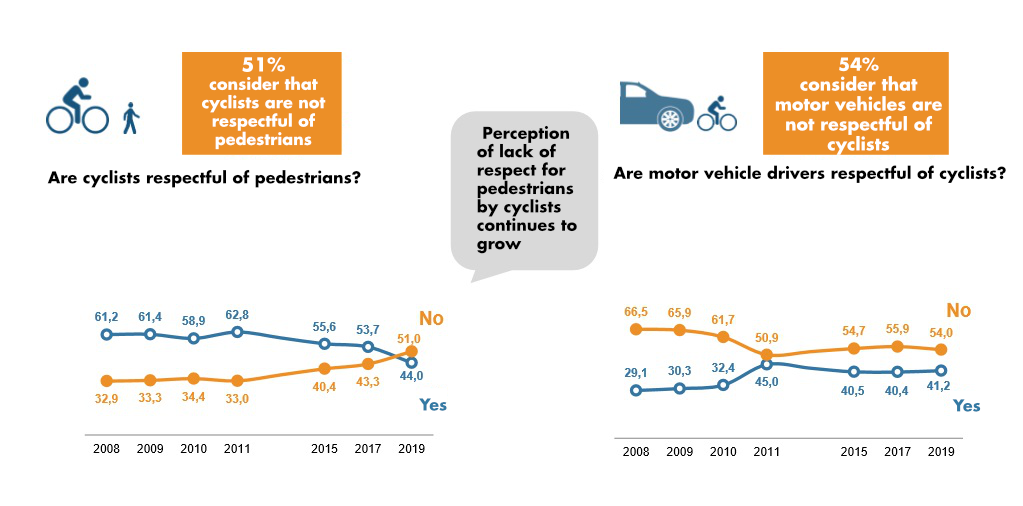
Women boost bicycle use in Spain
The Bicycle Barometer of 2019 in Spain , elaborated by ECF Cities & Regions for Cyclist member Red de Ciudades por la Bicicleta (RCxB), shows that the use of bicycles has grown by 2 points since 2017. An increase driven by Spanish women, who have raised bicycle use by six points in the last two years, in contrast to the impasse over cycling by Spanish men.
The bicycle is gradually becoming more popular in Southern Europe. The path is long and the starting-point is quite far from its northern neighbours, both in terms of infrastructure and efficiency. But Spain is rapidly improving its statistics and women are the ones driving this rise over the last few years. In 2017, 59.1% of men and 37.4% of women were frequent bicycle users, however, in 2019, the ratio of men has remained the same (58.9%) whereas the one of women has increased by six points (42.8%).

The bicycle has achieved an unprecedented position: more than half of Spaniards between the ages of 12 and 79 (50.7%) have used it with some frequency in the last year. A record that would not be understood without the inclusion of women in cycling: if bicycle use has grown by two points since 2017 in Spain, it is because more and more women are riding bikes. As the latest Bicycle Barometer in Spain shows, the gender gap between riders has narrowed by 16 points since 2010.
Cycling gains ground in medium-sized cities
The Bicycle Barometer, elaborated by RCxB (member of the Expert Group of ECF Cities & Regions for Cyclists network), also reveals that the bike sharing is working in many Spanish cities that are committed to this system. Nowadays, more than three million Spaniards use some type of public bicycle.
 Not only did the knowledge of the service increase by 4.4% in the last two years, but also the use of it. One out of every five people who know about the service uses it. This figure has grown by 5.1% compared to 2017.
Not only did the knowledge of the service increase by 4.4% in the last two years, but also the use of it. One out of every five people who know about the service uses it. This figure has grown by 5.1% compared to 2017.
It is in medium sized cities with a good public system and a proper cycling infrastructure, where the bicycle is most successful in Spain. The study shows a higher proportion of bicycle users in Seville (59.7%), Zaragoza (58.1%) and Valencia (55.77%) than in the two main Spanish cities: Barcelona (51%) and Madrid (47%). Nevertheless, in big cities, there is a widespread agreement on the advantages of the bicycle. Madrid and Barcelona represent the places where cycling becomes the most uncomfortable, but also where bike use is seen as the most time-saving option.
Most of the Spanish citizens (91%) think that the city councils should create parking spaces for bicycles, especially in stations and public transport stops, but also in public and private centres (87%).
Road safety education, a pending subject
The bicycle has experienced a generalised advance in daily trips, such as going to work, studying and other daily trips. The most significant increase in the use of bicycles is in journeys to schools and universities (8.6% since 2017). However, there is still a general feeling of lack of road safety education among Spanish people.

There is a growing perception of incivility on the part of cyclists towards pedestrians. 51% of Spaniards consider that cyclists are not respectful of pedestrians, a trend that has increased by 17% since 2010. In turn, 54.0% considered that motor vehicles were not respectful to cyclists either. The spread of bicycles in public spaces is creating a behaviour change in Spain, and the great work of organizations like RCxB and ConBici is being essential to this improvement.
If you are interested in gender equality and mobility, - Read our article on the International Women's Day - Stay tuned for our Women Cycling Series coming soon!
Regions:
News category:
Contact the author
Recent news!
Upcoming events
Contact Us
Avenue des Arts, 7-8
Postal address: Rue de la Charité, 22
1210 Brussels, Belgium









